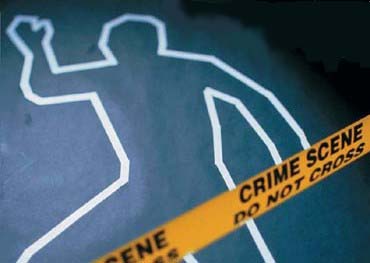
Coroner Records

Cuyahoga County OHGenWeb |

| Coroner Records |
 |
|
If a recent (after 1900) ancestor died under mysterious circumstances, or without medical care, or you find a death certificate that says that an autopsy was done, or the certificate was signed by the coroner/medical examiner it's always a good idea to check the Medical Examiner's office to see if they have a Coroner's file on that person. You can write or call the Medical Examiner's office and ask them to check their index for the individual you are interested in. They will check their index and get back to you if they have anything, indicating the number of pages they have and the cost to obtain a photocopy of the file. If a similar death occurred before 1900, use the indexes. Those records are at the Cuyahoga County Archives. |
Contact information:Cuyahoga County Medical Examiner Also, there are two indexes of the 1833-1900 Coroner's Case Files at the Cuyahoga County Archive online.
Coroner Records - A Brief Historyby Cynthia Turk "The county coroner has the ancient duty of determining the cause of death where death occurs under suspicious circumstances or by unlawful means, the proper distribution of property found on or about the deceased, and the management of the county morgue."1 The Coroner falls under law enforcement. The records required by law and kept by the Coroner as of 1941, consist of "a report of findings in cases of unlawful death, and an inventory of articles found on or about the body of the deceased."2 Established in 1788, the office of county coroner was made appointive for a two-year term by the territorial governor. In 1802 the Ohio Constitution made this an elected office. The term of office was increased to four years in 1936.3 Another entry from Lake County's Inventory of the County Archives page 139:
More recent Ohio laws require continuing education for the Coroner.5 They also spell out that he is responsible for notification of the deceased's next of kin. Additionally he is responsible for the personal effects of the deceased, returning them to family, or if no family is found, to sell the items if the body is buried at county expense.6 When the new Cuyahoga County government structure took effect in 2011, the County Executive appointed a Medical Examiner, replacing the elected County Coroner system. Cuyahoga Charter states that the duties will follow the State laws for Coroner.7 1. Inventory of the County Archives, No. 43 Lake County (Painesville) (Columbus, Ohio: The Ohio Historical Records Survey Project, October 1941) p. 24; citing The Reorganization of County Government in Ohio: Report of the Governor's Commission on County Government (n.p., December, 1934), sec 2856.2. Inventory of the County Archives, No. 43 Lake County (Painesville) (Columbus, Ohio: The Ohio Historical Records Survey Project, October 1941). Found at Morley Library, Painesville, Ohio. 3. "The Coroner in Ohio," Ohio State Coroners Association History, (Accessed from http://www.osca.net/coronerinohio.php 28 February 2013). 4. Inventory of the County Archives, No. 43 . . . p. 139. 5."Ohio Revised Code 313.02 Qualifications for Coroner; Continuing Education;"(http://www.osca.net/elected laws.php#31302 : accessed 28 February 2013). 6 . "Ohio Revised Code 313.14 Notice to Relatives; Disposition of Property," (http://www.osca.net/opinion.php#31314 : accessed 28 February 2013.) 7. Charter of Cuyahoga County, Article V, Section 5.03 Medical Examiner: Powers, Duties and Qualifications," Cuyahoga County Counsel, (http://council.cuyahogacounty.us/en-US/Charter-cuyahogacounty.aspx : accessed 20 October 2013). Left photo by Laura Hine: Potters' Field near Highland Park Cemetery. Right courtesy Bing.com images. |
|
© Cuyahoga County OHGenWeb 2013-24. All Rights Reserved. |